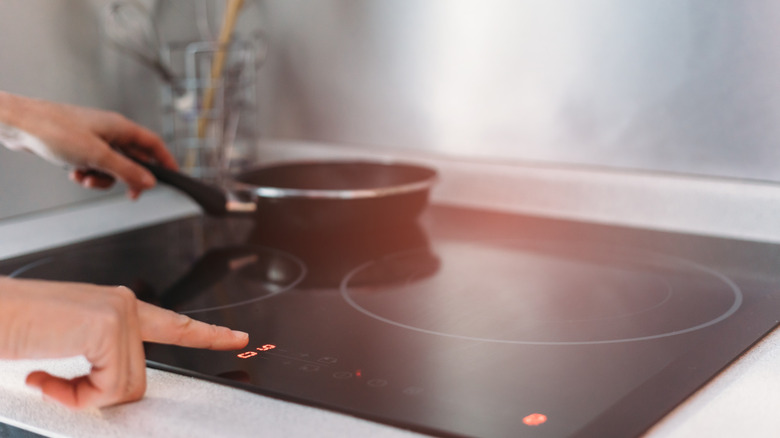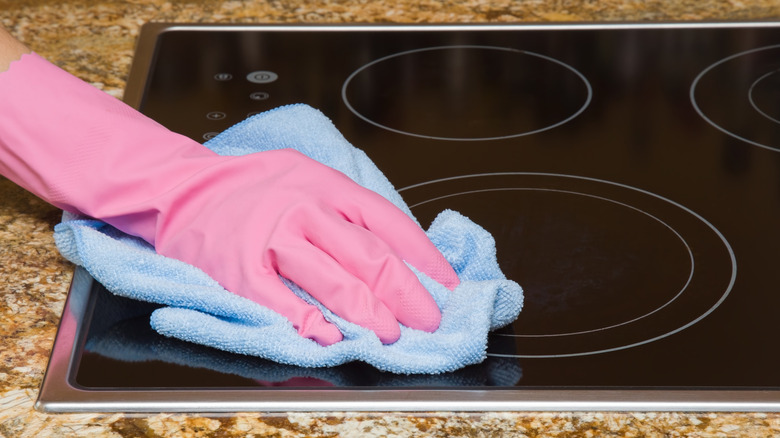Simple Rules That Keep An Induction Cooktop Cleaner Than Ever
We may receive a commission on purchases made from links.
There are many benefits of induction cooktops that draw people to installing these over electric and gas-powered versions. Chances are that you were attracted to the fast and even cooking capabilities of the appliance, which are among the differences between various stove types. Another key benefit is its easy maintenance and clean-up, as there are no grates or burners to remove. Nevertheless, it's still important to keep induction cooktops looking their best with regular cleaning and maintenance, and to avoid items that will scratch these appliances.
The biggest rule to follow with induction cooktop cleaning is to address any spills, splashes, and debris on the appliance as soon as possible. In theory, since induction cooktops do not get as hot as other types of stoves, you should be able to take a damp cloth to any spills right away before any messes might cake onto the surface. Once the cooktop cools down, all of the lights on the appliance should switch off to let you know the unit is no longer warm. At this point, you can take a soft paper towel, microfiber cloth, or sponge and work through any messes with warm soapy water. Addressing spills early on will prevent caked-on stains that might otherwise require scrubbing.
Tips for keeping an induction cooktop clean and scratch-free
Despite their durability, it is possible to scratch the glass-ceramic materials that make up an induction cooktop. As such, you should never use scrubbing tools or powerful cleaners with this type of cooktop. Examples include rough sponges or any cleaning products that have abrasive ingredients, bleach, or ammonia, all of which can damage your cooktop. When you do clean up spills with a soft sponge or cloth, make sure you gently rub them in a circular motion, rather than try to scrub them. Also, never use sharp objects to lift any caked-on debris.
Overall, induction cooktops are considered easy-to-clean stove types. For occasional tough spills, grease, and stains, though, consider using a commercial product designed specifically for induction cooktops, such as Weiman Daily Cooktop Cleaner. As a greener alternative, you may consider making your own cleaner with a combination of equal-parts baking soda and vinegar to help gently lift caked-on spills.
Also, while you can safely use water and a cloth for daily maintenance, know that hard water can possibly make your induction cooktop appear dirty over time, and you may need to consider hacks that remove hard water stains. You can help your cooktop look clean again by removing hard water stains with white vinegar. Simply spray a bit of vinegar onto a microfiber cloth and apply it to the countertop. Wait a few minutes, then wipe it away with a clean cloth.

